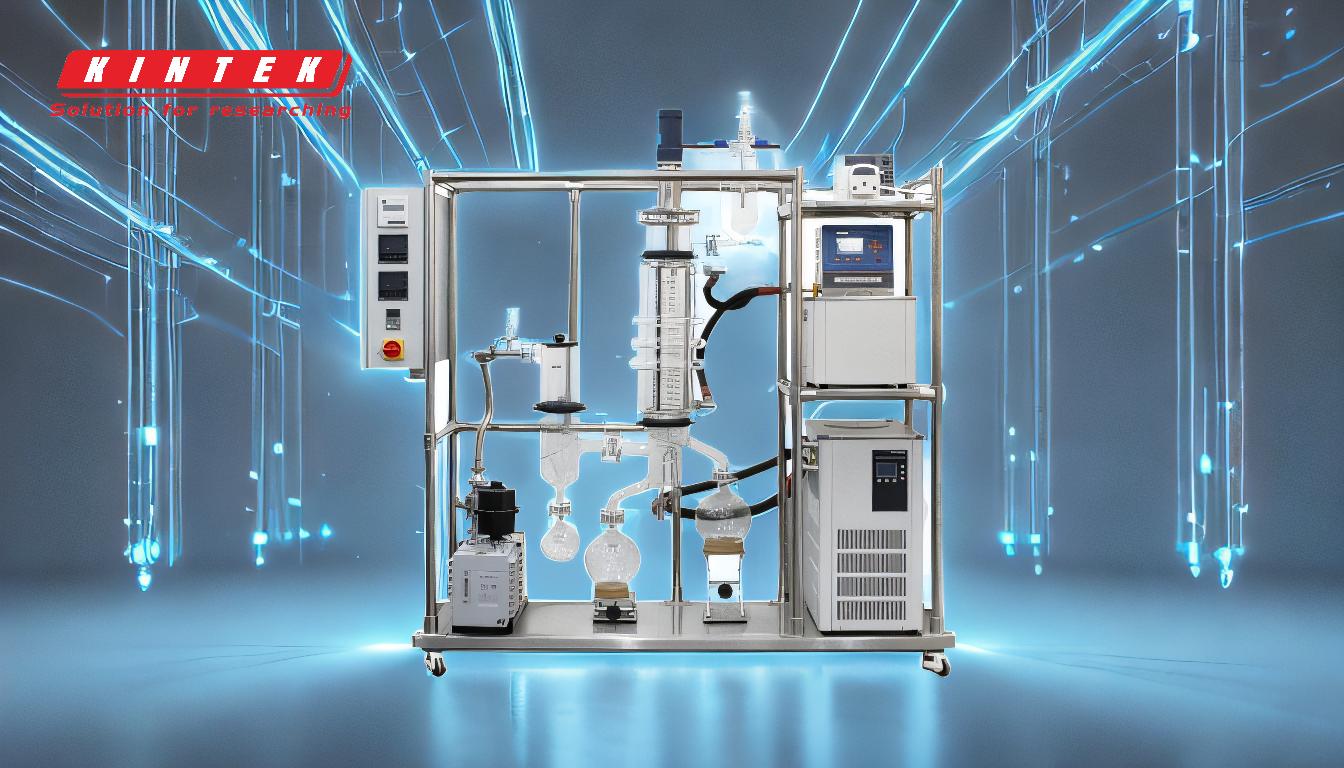A vacuum significantly affects the evaporation process by lowering the boiling point of liquids, enabling faster and more controlled evaporation at lower temperatures. This is particularly beneficial for heat-sensitive materials, as it prevents thermal degradation. Vacuum evaporation is energy-efficient, reduces contamination risks, and allows precise control over the process. It is widely used in applications like rotary evaporation, where it ensures gentle separation of solvents from products. The vacuum pump plays a critical role in maintaining the desired pressure, which directly influences the evaporation rate and process efficiency.
Key Points Explained:

-
Lowering Boiling Points with Vacuum
- A vacuum reduces the air pressure in the evaporation chamber, which lowers the boiling point of liquids.
- This allows solvents to evaporate at much lower temperatures than their standard boiling points, making it ideal for heat-sensitive substances.
- Example: High-boiling solvents like DMSO can be evaporated at modest temperatures under vacuum, avoiding thermal damage.
-
Increased Evaporation Rate Without Raising Temperature
- Vacuum enables faster evaporation rates without increasing the bath temperature.
- This is particularly useful when higher temperatures could degrade the material or compromise the product's integrity.
- Controlled pressure ensures even evaporation, improving solvent-product separation.
-
Energy Efficiency
- By lowering the boiling point, vacuum evaporation reduces the energy required for heating.
- This makes the process more energy-efficient compared to classical distillation methods.
-
Protection of Heat-Sensitive Materials
- Vacuum evaporation is a gentle process, ideal for thermolabile substances that degrade at high temperatures.
- It ensures that heat-sensitive materials are protected while achieving efficient solvent removal.
-
Precise Process Control
- Vacuum is the primary variable in evaporation processes, allowing rapid adjustments compared to temperature changes.
- This precision ensures consistent and controlled evaporation rates, which are critical for applications like rotary evaporation.
-
Reduced Contamination Risks
- A vacuum removes unwanted vapors and background gases, ensuring that evaporated particles travel directly to the deposition target.
- This minimizes contamination, improves vapor deposition efficiency, and allows better control over substrate thickness.
-
Applications in Rotary Evaporation
- Rotary evaporation relies heavily on vacuum to separate solvents from products at low temperatures.
- It is widely used in laboratories and industries for processing heat-sensitive materials and high-boiling solvents.
-
Role of the Vacuum Pump
- The vacuum pump is a critical component, often overlooked but essential for maintaining the desired pressure.
- It ensures the efficiency and reliability of the evaporation process, especially for challenging solvents like DMSO.
-
Factors Influencing Evaporation Rate
- The rate of evaporation under vacuum depends on:
- Heat transfer efficiency to the liquid.
- Heat required to evaporate the liquid.
- Maximum allowable temperature of the liquid.
- Pressure conditions in the evaporation chamber.
- Potential changes in the material during evaporation.
- The rate of evaporation under vacuum depends on:
By leveraging these principles, vacuum evaporation offers a versatile, efficient, and gentle solution for a wide range of applications, from laboratory research to industrial processes.
Summary Table:
| Key Benefit | Explanation |
|---|---|
| Lower Boiling Points | Reduces air pressure, enabling evaporation at lower temperatures. |
| Increased Evaporation Rate | Faster evaporation without raising temperature, ideal for sensitive materials. |
| Energy Efficiency | Reduces energy consumption compared to traditional methods. |
| Protection of Heat-Sensitive Materials | Prevents thermal degradation during evaporation. |
| Precise Process Control | Allows rapid adjustments for consistent evaporation rates. |
| Reduced Contamination Risks | Minimizes unwanted vapors, improving vapor deposition efficiency. |
| Applications in Rotary Evaporation | Widely used for gentle solvent separation in labs and industries. |
| Role of Vacuum Pump | Maintains desired pressure, ensuring process reliability and efficiency. |
Optimize your evaporation process with vacuum technology—contact our experts today!














